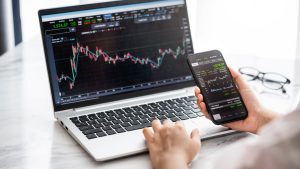Trading forex like a hedge fund requires a deep understanding of market mechanics, institutional strategies, and risk management. Hedge funds operate with vast amounts of capital, employing sophisticated trading models, algorithms, and data analysis to maximize profits while minimizing risk. Unlike retail traders who rely on traditional indicators and technical patterns, hedge funds use advanced techniques, including macroeconomic analysis, algorithmic trading, and statistical arbitrage. This guide will explore the key strategies hedge funds utilize and how you can apply these tactics to improve your forex trading performance.
The Hedge Fund Approach to Forex Trading
Hedge funds trade forex with a different mindset than retail traders. They incorporate multiple strategies, focusing on macroeconomic trends, market inefficiencies, and liquidity imbalances. Their goal is not just to predict market movements but to exploit inefficiencies through sophisticated execution models. Hedge funds often have access to insider knowledge, deep liquidity pools, and high-frequency trading technology that allow them to execute trades with precision. However, retail traders can replicate many of their techniques by adopting a disciplined and data-driven approach.
Key Strategies Used by Hedge Funds in Forex Trading
1. Global Macro Trading
One of the most common hedge fund strategies is global macro trading, which involves analyzing economic indicators, interest rates, and geopolitical events to forecast currency movements. Funds monitor central bank policies, inflation data, employment reports, and trade balances to make informed decisions. For example, if a central bank signals future interest rate hikes, hedge funds may take long positions in that currency, anticipating appreciation due to increased demand.
2. Algorithmic and High-Frequency Trading (HFT)
Hedge funds often use algorithmic trading and high-frequency trading (HFT) strategies to execute large orders in milliseconds. These algorithms scan price movements, detect patterns, and capitalize on micro-second inefficiencies in the market. While retail traders may not have access to HFT infrastructure, they can use automated trading bots and algorithmic strategies available through various platforms to improve trade execution.
3. Carry Trade Strategy
The carry trade strategy involves borrowing a low-interest-rate currency and using the proceeds to invest in a higher-yielding currency. Hedge funds analyze global interest rate differentials and capitalize on the spreads. For instance, if the U.S. Federal Reserve maintains high interest rates while the Bank of Japan keeps rates low, hedge funds might go long on USD/JPY to profit from interest rate arbitrage.
4. Statistical Arbitrage
Statistical arbitrage is a quantitative trading strategy that uses mathematical models to identify mispricings between currency pairs. Hedge funds deploy machine learning algorithms to detect price discrepancies and execute trades before the market corrects itself. While retail traders may not have the same level of computational power, they can still use correlation analysis and quantitative models to find arbitrage opportunities.
5. Order Flow Analysis
Order flow trading involves analyzing the flow of buy and sell orders in the market to predict future price movements. Hedge funds use proprietary data feeds and level 2 market depth to identify institutional buying or selling pressure. Retail traders can gain similar insights by using tools like the Commitment of Traders (COT) report or order book data available on trading platforms.
6. Risk Management and Hedging
Risk management is at the core of hedge fund trading. Funds use sophisticated risk models to protect capital and hedge against unfavorable market moves. Techniques include using options, futures contracts, and multi-currency portfolios to mitigate risks. Retail traders can apply similar principles by diversifying their portfolio, setting strict stop-loss levels, and using hedging strategies such as buying safe-haven currencies during periods of uncertainty.

How Retail Traders Can Apply Hedge Fund Strategies
Retail traders can adopt hedge fund strategies by focusing on macroeconomic trends, using algorithmic tools, and improving risk management techniques. While retail traders lack the capital and execution power of hedge funds, they can still leverage institutional strategies by accessing economic data, refining their trading systems, and developing algorithmic models using trading bots.
Additionally, being part of a professional trading community can provide insights and mentorship similar to what hedge fund traders receive. Platforms like EPIQ Trading Floor offer members access to professional trade signals, live coaching, and proprietary market analysis tools that can significantly enhance a trader’s edge.

Final Thoughts
Hedge fund trading strategies are built on discipline, risk control, and data-driven decision-making. By applying principles like global macro trading, statistical arbitrage, and order flow analysis, retail traders can elevate their forex trading game. While hedge funds have an edge in terms of capital and technology, retail traders can still gain a competitive advantage by refining their strategy and using institutional-grade insights.
If you want to take your trading skills to the next level, join the EPIQ Trading Floor. Our exclusive membership includes a mobile app with real-time trade signals, live coaching, and advanced trading resources to help you trade smarter. Use code “BLOG” at checkout for a 10% discount and get a risk-free 3-day trial—cancel anytime within 72 hours without being charged.
Disclaimer: This content is for educational purposes only and does not constitute financial advice. Trading forex involves significant risk, and you should consult with a financial professional before making investment decisions.










Responses